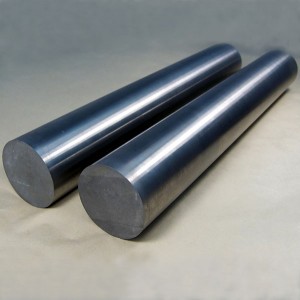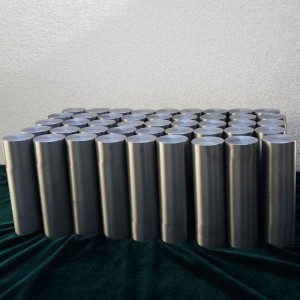Tantalum screws and nuts tantalum fasteners
The production process of tantalum bolts and nuts strictly follows high-quality standards to ensure the durability and reliability of the products. They can withstand extremely high temperatures and pressures, and maintain stable performance even in extreme environments. Therefore, tantalum bolts and nuts are commonly used in highly demanding industrial and scientific applications, such as aerospace, nuclear facilities, and the manufacturing of high-end medical devices.
| Dimensions | As your requirement |
| Place of Origin | Luoyang, Henan |
| Brand Name | FGD |
| Application | Industry,semiconductor |
| Purity | 99.95% |
| Melting point | 2996℃ |
| Density | 16.65g/cm3 |
| Hardness | HV250 |

|
λ/nm |
f |
W |
F |
S* |
CL |
G |
|
271.5 |
0.055 |
0.2 |
N-A |
30 |
1.0 |
|
|
260.9(D) |
0.2 |
N-A |
23 |
2.1 |
||
|
265.7 |
0.2 |
N-A |
2.5 |
|||
|
293.4 |
0.2 |
N-A |
2.5 |
|||
|
255.9 |
0.2 |
N-A |
2.5 |
|||
|
264.8 |
0.2 |
N-A |
x |
|||
|
265.3 |
0.2 |
N-A |
2.7 |
|||
|
269.8 |
0.2 |
N-A |
2.7 |
|||
|
275.8 |
0.2 |
N-A |
3.1 |
|||
|
277.6 |
0.2 |
N-A |
58 |
1. Our factory is located in Luoyang City, Henan Province. Luoyang is a production area for tungsten and molybdenum mines, so we have absolute advantages in quality and price;
2. Our company has technical personnel with over 15 years of experience, and we provide targeted solutions and suggestions for each customer's needs.
3. All of our products undergo strict quality inspection before being exported.
4. If you receive defective goods, you can contact us for a refund.

1. raw material preparation
(Select appropriate materials of wire or board to ensure that the material meets the standard requirements. )
2. Wire processing/stamping
(Wire is processed into screw blanks through cold heading machines; The sheet metal is punched into nut blanks using a punch press. This step is to form the basic shape of the bolt and nut).
3. heat treatment
(Heat treat the blank, such as quenching, tempering, etc., to enhance hardness and toughness, ensuring the mechanical properties of the fastener)
4. Rolling thread/tapping teeth
(Screw blanks are threaded using a rolling machine; The nut blank is processed with internal threads on the tapping machine)
5.Surface Treatment
(Surface treatments such as electroplating, oxidation, phosphating, etc. are carried out according to the requirements to increase corrosion resistance and aesthetics
6. detection
(Use gauges, optical instruments, etc. to comprehensively inspect finished products for dimensions, thread accuracy, surface defects, etc., to ensure quality)
7. Screening and Packaging
(Remove non-conforming products through a vibrating screen machine, classify them according to specifications, and then automate or manually package them)
8. quality control
(Sampling for mechanical performance testing, such as tensile testing, torque testing, etc., to ensure that the product meets industry and customer standards)
Molybdenum targets are commonly used in X-ray tubes for medical imaging, industrial inspection, and scientific research. Applications for molybdenum targets are primarily in generating high-energy X-rays for diagnostic imaging, such as computed tomography (CT) scans and radiography.
Molybdenum targets are favored for their high melting point, which allows them to withstand the high temperatures generated during X-ray production. They also have good thermal conductivity, helping to dissipate heat and extend the life of the X-ray tube.
In addition to medical imaging, molybdenum targets are used for non-destructive testing in industrial applications, such as inspecting welds, pipes and aerospace components. They are also used in research facilities that use X-ray fluorescence (XRF) spectroscopy for material analysis and elemental identification.







Matching screws and nuts involves ensuring that the threads of the screws and nuts are compatible. Here are the general steps for matching screws and nuts:
1. Determine screw size: Measure the diameter and length of the screw to determine its size. Common screw sizes are designated using a number followed by a fraction, such as #8-32 or #10-24.
2. Identify thread types: Screws and nuts can have different thread types, such as coarse threads or fine threads. It is important that the thread type of the screw matches the corresponding nut.
3. Check the thread pitch: The thread pitch refers to the distance between adjacent threads on the screw or nut. Make sure the screws and nuts have the same thread pitch to ensure they mate correctly.
4. Consider materials and strength: Choose screws and nuts made from compatible materials and with similar strength ratings to ensure they can withstand the intended application.
5. Test the fit: Before final selection, test the screws and nuts to make sure they fit together smoothly and securely.
By following the steps below, you can effectively match screws and nuts to your specific application.
When considering thread design for tantalum bolts and nuts, there are several important issues that should be noted due to tantalum’s unique properties:
1. Material Compatibility: Tantalum is a corrosion-resistant metal, so it is important to ensure that the materials used for nuts and bolts are also compatible with tantalum. Using materials that are incompatible with tantalum may cause galvanic corrosion and compromise the integrity of the joint.
2. Thread lubrication: Tantalum has a tendency to wear, which is the process of material adhesion and transfer between sliding surfaces. To mitigate this problem, proper thread lubrication should be considered when designing tantalum bolts and nuts to prevent wear and ensure smooth assembly and disassembly.
3. Thread strength: Tantalum is a relatively soft metal, so the strength of the material should be taken into consideration when designing threads. It is important to ensure that the thread form and engagement provide sufficient strength for the intended application while avoiding excessive stress concentrations.
4. Thread form: Thread form, whether metric, uniform, or other standards, should be carefully selected to ensure compatibility with mating parts and to meet the specific requirements of the application.
5. Surface Finish: Tantalum bolts and nuts should have a smooth and uniform surface finish to minimize the possibility of wear and ensure proper sealing when the joint is exposed to liquids or gases.
By addressing these issues in tantalum bolt and nut thread design, you can ensure the reliability and performance of your fastening systems in tantalum applications.










